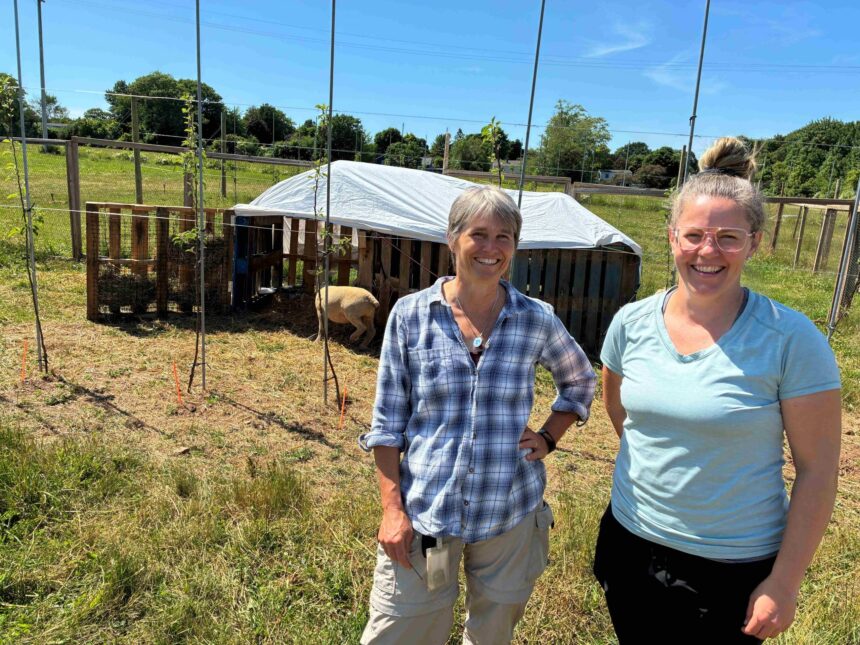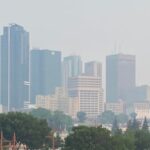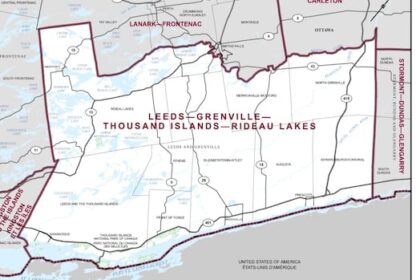Suzanne Blatt (left) and Vicky Levesque, researchers at the Agriculture and Agri-food Canada research centre in Kentville, are looking at new methods of replacing apple orchards that will reduce carbon emissions for growers. One of those methods is having sheep look after the mowing of the lanes between rows of trees. Photo by Ian Fairclough /Chronicle HeraldArticle contentAs climate change continues to create damage across Canada and the globe, researchers at the Agriculture and Agri-food Canada research centre in Kentville are looking at ways to reduce the carbon footprint of apple growing through a variety of methods.THIS CONTENT IS RESERVED FOR SUBSCRIBERS ONLY.Subscribe now to access this story and more:Unlimited access to the website and appExclusive access to premium content, newsletters and podcastsFull access to the e-Edition app, an electronic replica of the print edition that you can share, download and comment onEnjoy insights and behind-the-scenes analysis from our award-winning journalistsSupport local journalists and the next generation of journalistsSUBSCRIBE TO UNLOCK MORE ARTICLES.Subscribe or sign in to your account to continue your reading experience.Unlimited access to the website and appExclusive access to premium content, newsletters and podcastsFull access to the e-Edition app, an electronic replica of the print edition that you can share, download and comment onEnjoy insights and behind-the-scenes analysis from our award-winning journalistsSupport local journalists and the next generation of journalistsRegister to unlock more articles.Create an account or sign in to continue your reading experience.Access additional stories every monthShare your thoughts and join the conversation in our commenting communityGet email updates from your favourite authorsSign In or Create an AccountorArticle contentSuzanne Blatt and Vicky Levesque are looking at various ways to cut carbon emissions during orchard renewal, when old or less-productive trees are removed from an orchard and new trees or varieties are planted.Article contentArticle contentArticle contentThat traditionally involves removing the trees and the root system, which are then burned.Article content“What we are looking for are ways to mitigate that impact on the environment,” Levesque said.Article contentOne of the things they’re looking at is the feasibility of leaving the roots and the trunk in the ground, cutting the tree off flush with the surface and mulching the trees to put down in the row where the new trees will be planted between the old ones.Article contentAnother trial plot follows the same process but without the mulched tree material around the new plantings, and another adds mycelium from mushrooms to help compost the mulch to bring added nutrients and promote microbial activity in the soil.Article content“That mycelium can also help mitigate pests and disease,” Levesque said.Article contentThe reason growers have always burned the old trees was for that purpose, but that also released stored carbon in the root systems, Blatt said.Article contentArticle contentShe said they’re also taking samples to test the health of the the soil throughout the next three years of the project.Article contentBlatt and Levesque are also looking at combining the new tree plantings with a beneficial endophyte to see if will help grow them without having to apply a treatment normally meant to get rid of potentially harmful pests or disease in the ground.Article contentNot digging up the existing roots also means less diesel fuel being used in tractor or excavators to dig up the old trees.Article contentThe study is also looking at growing new trees with and without endophytes in an area without pre-existing trees, and also a planting in that area that will have sheep present to eliminate the need for mowing the grass by tractor.Article contentNot having tractors between rows of trees means less soil compaction. Compacted soil can have a negative impact on good microbes.Article contentThe sheep mowing was being used at a local winery, which is where the idea to test it on apples here came from, but the management system originated in Europe.Article content“(The test plots) are something the growers need to see first to see if it’s working or not,” Levesque said.Article content
Researchers looking at ways to reduce carbon emissions in apple orchards











